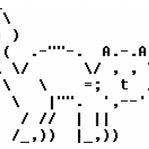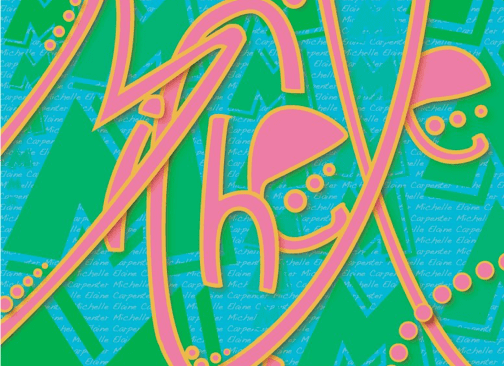Art and Design 2200
Unit 2: Graphic/MEDIA Arts
Graphic design is a creative process that combines art and technology to communicate ideas. The designer works with a variety of communication tools in order to convey a message from a client to a particular audience. The main tools are image (illustration) and typography (lettering).
Media Art refers to artworks created with new media technologies, including digital art, computer graphics, computer animation, virtual art, Internet art, interactive art, video games, computer robotics, 3D printing, and more.
We will look at a variety of graphic arts and media arts. Read the following article to get an idea of how graphics and digital design can be used to create new innovative forms of art.
Media Art refers to artworks created with new media technologies, including digital art, computer graphics, computer animation, virtual art, Internet art, interactive art, video games, computer robotics, 3D printing, and more.
We will look at a variety of graphic arts and media arts. Read the following article to get an idea of how graphics and digital design can be used to create new innovative forms of art.
| Graphic Arts | |
| File Size: | 2846 kb |
| File Type: | ppt |
|
| ||||||||||||
Graphic Arts Introduction / Personal Logo Design
The focus of graphic design is to communicate a message clearly and effectively. Using the ideas that were presented in the introduction, create a strong design that uses both your full name and a quote, phrase, or slogan that tells us something about you. Apply all your knowledge about good design to make the artwork as dynamic and visually interesting as possible. Try to be creative, thoughtful, and unique.
The focus of graphic design is to communicate a message clearly and effectively. Using the ideas that were presented in the introduction, create a strong design that uses both your full name and a quote, phrase, or slogan that tells us something about you. Apply all your knowledge about good design to make the artwork as dynamic and visually interesting as possible. Try to be creative, thoughtful, and unique.
Before beginning your final design, you will complete at least 3 thumbnail sketches in your folder/sketchbook to test out multiple designs. Planning is a very important step in graphic design. Before choosing the final design from your thumbnails, discuss the different designs with your friends to see which design is the most effective to communicate your message.
You will be evaluated on your
You will be evaluated on your
- Ability to follow instructions (completion of thumbnails BEFORE completing final design)
- Quality of Design (Visual impact, effective use of Elements and Principles of Art)
- Technical Quality (level of completion)
- Effort/Neatness (Studio work habits and personal investment in the project)
- Creativity
|
| ||||||||||||

Media Arts Introduction / ASCII Art
Using google.docs (or another Word Processing computer program), you will create an image using only symbols found on your keyboard. The focus of this media art design is to communicate a message clearly and effectively. Apply all your knowledge about good design to make the artwork as dynamic and visually interesting as possible. Try to be creative, thoughtful, and unique.
ASCII art is any sort of pictures or diagrams drawn with the printable characters in the ASCII character set.
Probably the most common ASCII art picture is the smiley (-:
But it can get a lot more sophisticated than that. People use ASCII art for a number of reasons.
Using google.docs (or another Word Processing computer program), you will create an image using only symbols found on your keyboard. The focus of this media art design is to communicate a message clearly and effectively. Apply all your knowledge about good design to make the artwork as dynamic and visually interesting as possible. Try to be creative, thoughtful, and unique.
ASCII art is any sort of pictures or diagrams drawn with the printable characters in the ASCII character set.
Probably the most common ASCII art picture is the smiley (-:
But it can get a lot more sophisticated than that. People use ASCII art for a number of reasons.
- It is the most universal computer art form in the world -- every computer system capable of displaying multi-line text can display ASCII art, without needing to have a graphics mode or support a particular graphics file format.
- An ASCII picture is hundreds of times smaller in file size than its GIF or BMP equivalent, while still giving a good idea of what something looks like.
- It's easy to copy from one file to another (just cut and paste).
- It's fun!
What does ASCII mean? ========================================================================
ASCII (American Standard Code for Information Interchange) 7-bit as defined in ISO-646 is a basic set of 128 numbered symbols which almost all kinds of computer can display.
Here is a webpage with many different examples of ASCII Art from beginner to advanced.
ASCII (American Standard Code for Information Interchange) 7-bit as defined in ISO-646 is a basic set of 128 numbered symbols which almost all kinds of computer can display.
Here is a webpage with many different examples of ASCII Art from beginner to advanced.
Elements and Principles of Art and Design
After reviewing the Elements and Principles of Art, you will design and create your own large artwork or set of smaller artworks to educate your audience.
You will choose to base your design on:
You will choose from a variety of media and types of artworks such as:
Because the focus of graphic design is to communicate a message clearly and effectively, you will use your own knowledge of graphic design to create a strong design that will catch the viewer's eye and maintain their attention long enough to commuicate the meaning/message. Apply all your knowledge about good design to make the artwork as dynamic and visually interesting as possible. Try to be creative, thoughtful, and unique.
For this project, focus on the following:
Before beginning your final design, you will complete at least 3 thumbnail sketches in your folder/sketchbook to test out multiple designs. Planning is a very important step in graphic design. Before choosing the final design from your thumbnails, discuss the different designs with your friends to see which design is the most effective to communicate your message.
After reviewing the Elements and Principles of Art, you will design and create your own large artwork or set of smaller artworks to educate your audience.
You will choose to base your design on:
- Elements of Art (Dot, Line, Shape, Form, Colour, Value, Texture, Space)
OR - Principles of Art (Pattern, Contrast, Emphasis, Balance, Scale, Harmony, Rhythm/Movement, Unity, Variety)
You will choose from a variety of media and types of artworks such as:
- Set of Postcards (1 per element/principle)
- Set of Greeting Cards (1 per element/principle)
- Poster of Elements or Principles
- Pamphlet of Elements or Principles
- Children’s book of Elements or Principles
- Mobile of Elements or Principles
- Game designed to teach the Elements or Principles
OR - Anything else that you can think of to communicate your message (must be approved before beginning final version)
Because the focus of graphic design is to communicate a message clearly and effectively, you will use your own knowledge of graphic design to create a strong design that will catch the viewer's eye and maintain their attention long enough to commuicate the meaning/message. Apply all your knowledge about good design to make the artwork as dynamic and visually interesting as possible. Try to be creative, thoughtful, and unique.
For this project, focus on the following:
- Interesting font/lettering
- Fill up the entire picture plane (your design should fill the page)
- Interesting decorations/patterns/visuals
Before beginning your final design, you will complete at least 3 thumbnail sketches in your folder/sketchbook to test out multiple designs. Planning is a very important step in graphic design. Before choosing the final design from your thumbnails, discuss the different designs with your friends to see which design is the most effective to communicate your message.
|
| ||||||||||||
Artist Tribute Project
This will be our last project for this unit. You will create a zine based on your chosen artist. Your zine will try to advertise your chosen artist, so try to be creative and capture your audience’s attention!
Remember to try to use the style and colour scheme of your chosen painting and artist.
A zine (an abbreviation of magazine) is usually a small circulation, self-published work of original or appropriated texts and images usually reproduced with a photocopier.
Part A: 'Zine (Groups of 2-3)
Zine requirements:
After you have created your zine, you will design two (2) of the following graphic art artworks which will also be based on your artist.
For detailed instructions (including the sketchbook questions), please see the file below.
For information on famous artists, view these PowerPoints:
This will be our last project for this unit. You will create a zine based on your chosen artist. Your zine will try to advertise your chosen artist, so try to be creative and capture your audience’s attention!
Remember to try to use the style and colour scheme of your chosen painting and artist.
A zine (an abbreviation of magazine) is usually a small circulation, self-published work of original or appropriated texts and images usually reproduced with a photocopier.
Part A: 'Zine (Groups of 2-3)
Zine requirements:
- At least 8 pages including your cover and back cover (2 sheets of 11x14” paper folded in half)
- Zine name
- Photo of the artist
- At least 3 of the artist’s artworks
- Biography of your artist
- Puzzle or activity based on your artist
- Ads advertizing art supplies, artwork, or anything related to art
- Colour
- At least 1 short article
After you have created your zine, you will design two (2) of the following graphic art artworks which will also be based on your artist.
- Postcard from your artist
- Greeting card to your artist
- Greeting card by your artist
- Business card of your artist
- Poster advertising your artist’s artwork for sale
- Poster advertising event for your artist
- Invitation for an event for your artist
- Children’s book by your artist
- Mobile about your artist
For detailed instructions (including the sketchbook questions), please see the file below.
For information on famous artists, view these PowerPoints:
|
|
| ||||||||||||||||||
|
| ||||||||||||

